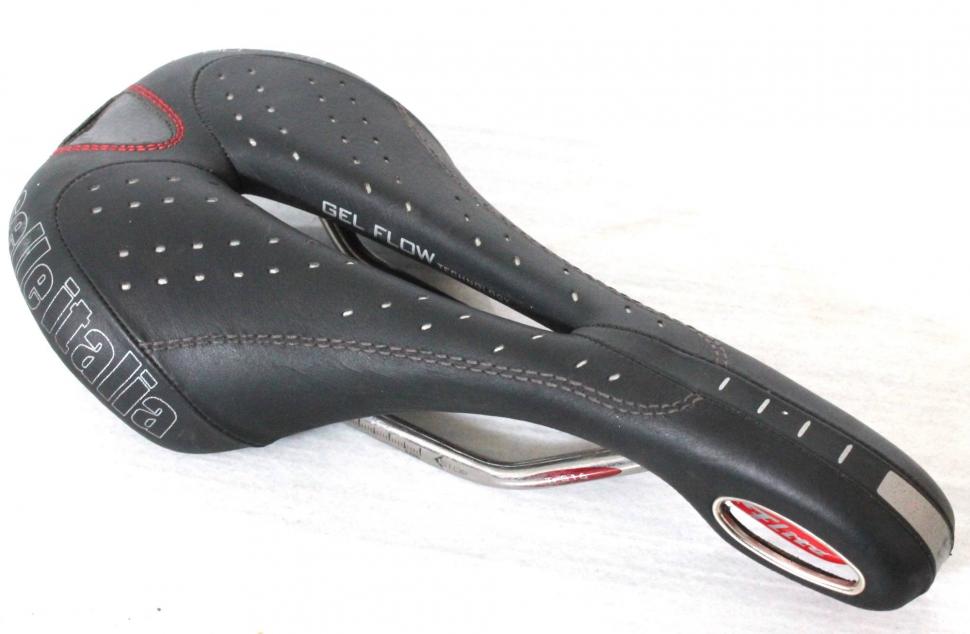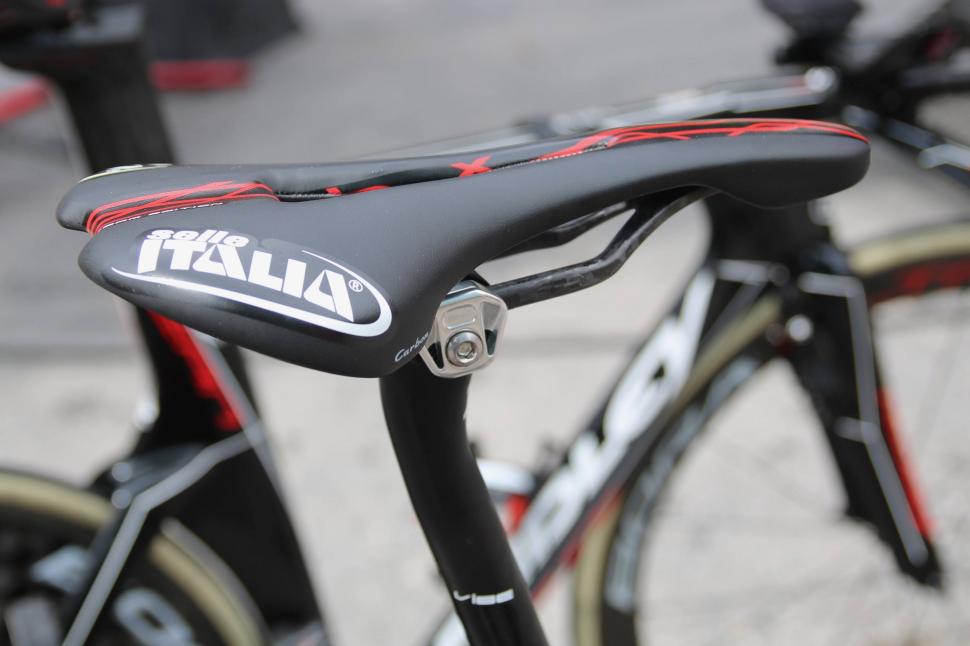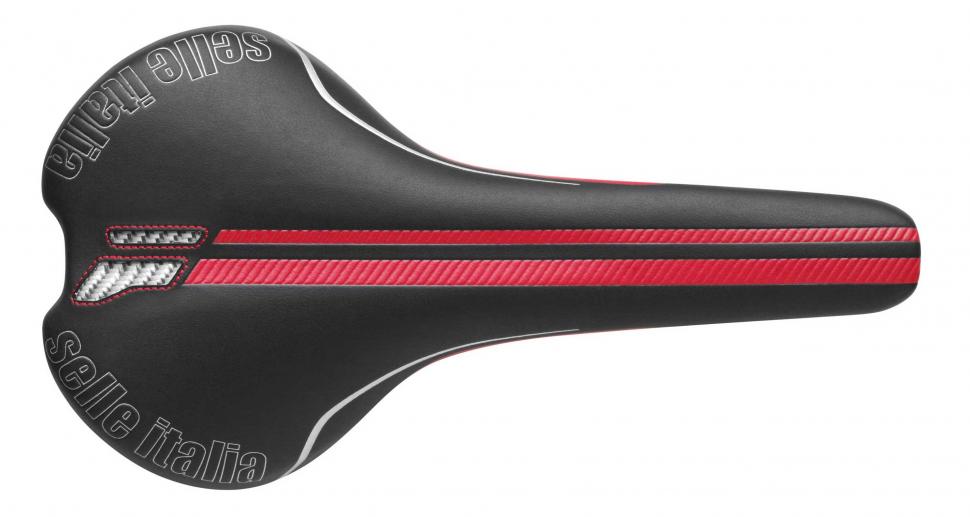- News
- Reviews
- Bikes
- Accessories
- Accessories - misc
- Computer mounts
- Bags
- Bar ends
- Bike bags & cases
- Bottle cages
- Bottles
- Cameras
- Car racks
- Child seats
- Computers
- Glasses
- GPS units
- Helmets
- Lights - front
- Lights - rear
- Lights - sets
- Locks
- Mirrors
- Mudguards
- Racks
- Pumps & CO2 inflators
- Puncture kits
- Reflectives
- Smart watches
- Stands and racks
- Trailers
- Clothing
- Components
- Bar tape & grips
- Bottom brackets
- Brake & gear cables
- Brake & STI levers
- Brake pads & spares
- Brakes
- Cassettes & freewheels
- Chains
- Chainsets & chainrings
- Derailleurs - front
- Derailleurs - rear
- Forks
- Gear levers & shifters
- Groupsets
- Handlebars & extensions
- Headsets
- Hubs
- Inner tubes
- Pedals
- Quick releases & skewers
- Saddles
- Seatposts
- Stems
- Wheels
- Tyres
- Health, fitness and nutrition
- Tools and workshop
- Miscellaneous
- Cross country mountain bikes
- Tubeless valves
- Buyers Guides
- Features
- Forum
- Recommends
- Podcast
feature
 Selle Italia Flite Flow Gel - 1.jpg
Selle Italia Flite Flow Gel - 1.jpgDesign Classic: Selle Italia Flite saddle
Selle Italia’s Flite has been a super-popular saddle since it was introduced 27 years ago, and although technology has come on a long way since then, it remains a favourite with performance-minded cyclists today.
Selle Italia has a history that stretches back to 1897 when it was begun in Corsico, near Milan, but it wasn’t until nearly a century later, in 1990, that the Flite came on the scene. It was an immediate success.
Selle Italia says that the Flite was in many ways the precursor of the very lightweight saddles that we see in its range today in that it weighed less than 200g and had a slim profile that reduced friction considerably. Both of those factors made it an attractive proposition.
The Flite (2017 range prices start at £94.99) might not look particularly slender compared to many modern saddles but, measuring 146mm x 280mm, it certainly was by the standards of the early 1990s.
You could argue that Selle Italia’s Turbo saddle, introduced a decade earlier, is worthy of ‘classic’ status… and you’d be right. Selle Italia calls that model, ridden by Tour de France great Bernard Hinault and many other professionals of his era, “the first completely anatomic saddle” because of its radical (for the time) new shape and padding.
The Turbo definitely led the way for the Flite but, although it is still available, its now seen as a retro design whereas the Flite continues to hold its own.
Check out our guide to high-performance saddles here.
The Flite’s best feature is its shape: narrow but not so narrow that support is compromised in the middle and rear sections (a modern version measures 145mm x 275mm compared to a Selle Italia SLR saddle that’s 131mm x 275mm), slim enough across the nose that it doesn’t get in the way of smooth pedalling, and with deep sides that don’t chafe. It’s also fairly flat from front to rear, allowing you a degree of fore/aft movement to relieve aching muscles while still remaining comfortable, and it offers a degree of padding but not so much that it ever feels squishy.
Of course, saddle comfort is famously – notoriously – a matter of individual anatomy and taste. What one rider finds comfortable can be torture for another. However, the Flite has proved hugely popular over the years.

Lotto Soudal's Adam Hansen rode the 2017 Tour de France on a Selle Italia Flite Team Edition Flow with carbon rails
The Flite design hasn’t stood still by any means. Selle Italia added silicone gel inserts in 1991 to help absorb vibration and introduced titanium rails as an option the following year to lower the weight and increase strength.
Read our review of the Selle Italis Flite Tekno Flow saddle here.
Since 2003 you’ve been able to buy Flites with Selle Italia’s Kit Carbonio rails (from £169.99) made from a vanadium-titanium tube wrapped in braided carbon fibre and most options come with Fibra-Tek microfibre covers these days. There’s a Flow model (£119.99) with an opening in the middle for more shell flexibility and to relieve perineal pressure and you can even buy a SuperFlow model (£159.99) with a huge central pressure-relief cut out.
The range was given a major update in 2013 but the modern Flites are still slim and supportive without too much padding, and they remain reasonably lightweight even by modern standards. If you want to stick with a classic style, that’s open to you with the Flite 1990 (£94.99) that features titanium rails and a leather cover.
Mat has been in cycling media since 1996, on titles including BikeRadar, Total Bike, Total Mountain Bike, What Mountain Bike and Mountain Biking UK, and he has been editor of 220 Triathlon and Cycling Plus. Mat has been road.cc technical editor for over a decade, testing bikes, fettling the latest kit, and trying out the most up-to-the-minute clothing. He has won his category in Ironman UK 70.3 and finished on the podium in both marathons he has run. Mat is a Cambridge graduate who did a post-grad in magazine journalism, and he is a winner of the Cycling Media Award for Specialist Online Writer. Now over 50, he's riding road and gravel bikes most days for fun and fitness rather than training for competitions.
Latest Comments
- Rendel Harris 15 min ago
Well no, they wouldn't, they would just have to prove that it was capable of running. If it's not capable of running because the battery is flat or...
- Rendel Harris 24 min 23 sec ago
I generally get a response saying that action will be taken in 90% of cases I submit (I do only submit ones that I believe are absolute certanties)...
- ubercurmudgeon 40 min 43 sec ago
Presidential pardon in 3... 2... 1...
- OldSkoolOldFart 42 min 19 sec ago
If you can't hear me call out a cheery (loud) "excuse me" as I approach them you're not going to hear the pathetic "ting" from a tiny bell....
- Spangly Shiny 1 hour 16 min ago
I got mine FOC with a Galibier gilet, just as versatile as a Buff.
- C3a 1 hour 31 min ago
It took most of 2024 and part of 2025 for the gravel bike I ordered to arrive. Nothing seems to be in stock.
- Spangly Shiny 1 hour 35 min ago
From the outside the US appears to be a Christian fundamentalist country, with the same prudish outlook as other religious fundamentalist countries.
- Simon E 2 hours 14 min ago
It's bullshit, a token effort akin to sportswashing....
- Rendel Harris 2 hours 20 min ago
If you know anyone with Zwift or other indoor training programmes, they all have FTP tests on them so you wouldn't have to subject yourself to a...


Add new comment
5 comments
I have bought quite a few saddles, I have settled for the Selle Italia SLR my bum is in harmony with this one. I bought the Selle Italia Flite and found this not to be suitable, too much padding. I bought a Selle Anatomica and this was comfy to start with as you can adjust the tension on the saddle with an Allen key. It was just too big for my bum.
I'm still on the flite Ti that was on my second hand get to work bike I purchased 20 years ago, had to get rid of the first one I brought in 93, I have one in blue with yellow kevlar corners as a spare. Had to buy a gelled up one in the late 90s for the good bike. I could be building my ultimate commuter in a bit, I will be buying the re-released early 90s Ti when I get to finishing it.
It would appear my arse is Flite Ti shaped. Either though wear or design.
"All prices are MSRP"
I hangs next to an autographed (Duggan & Moser) Gel Flow Ti with a cracked shell.
The last Kit Carbino Flite I had (ca. 2008) used 100% carbon rails - no carbon wrapped alloy - which was very evident when a rail was destroyed in a nasty left-cross crash with a car. Now it's hanging on my shop wall with Rein Taaramae's autograph on it.